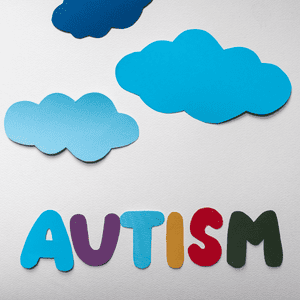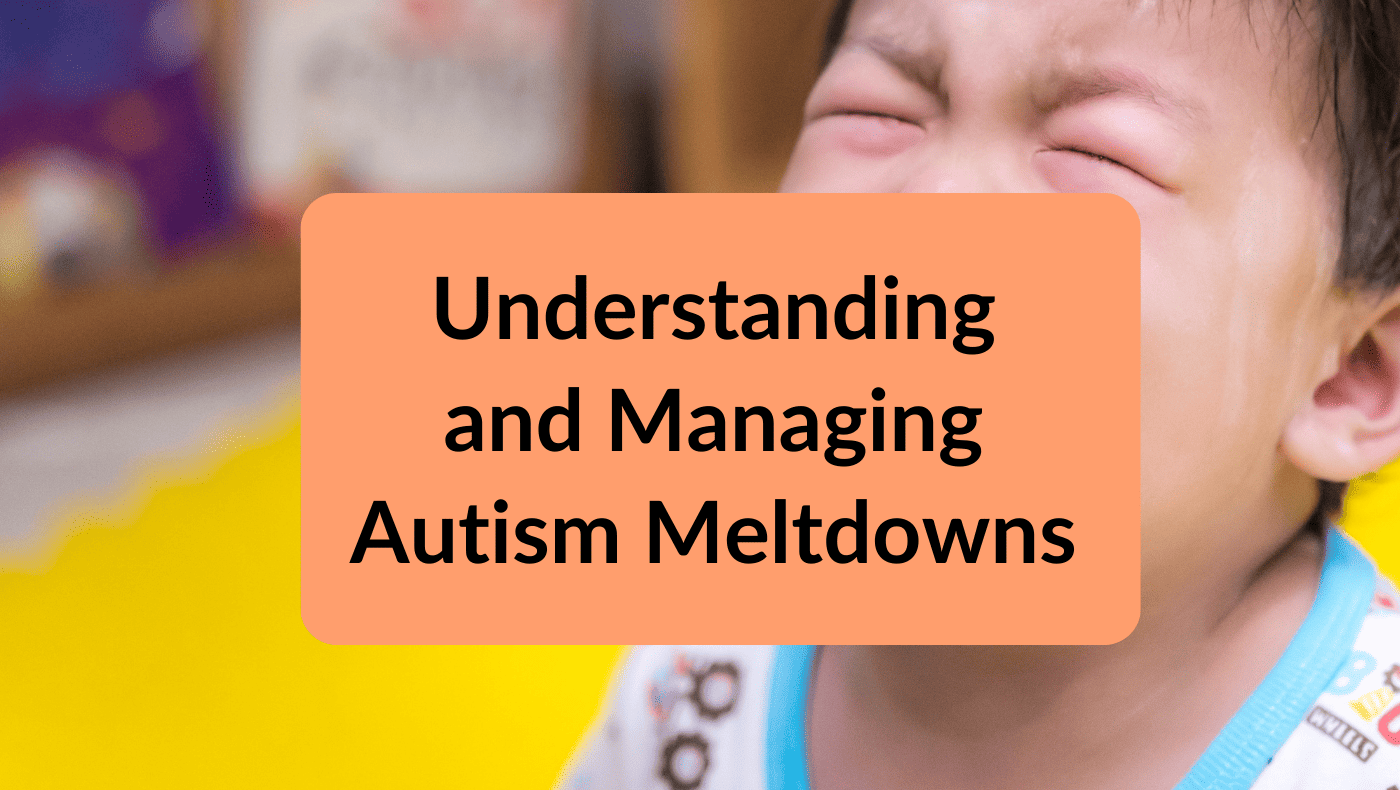Last updated on May 9th, 2024 at 07:29 am
Understanding and Managing Autism Meltdowns
Autism is a developmental disorder that affects an individual’s behavior, communication, and social skills.
It is a spectrum disorder, meaning that individuals with autism can present with a wide range of symptoms and characteristics.
One common challenge faced by individuals with autism and their caregivers is meltdowns.
In this post, I will share with you on how to understand and manage autism meltdowns.
What are Autism Meltdowns?
 Autism meltdowns are intense responses to overwhelming feelings or sensations that can occur in a child with autism.
Autism meltdowns are intense responses to overwhelming feelings or sensations that can occur in a child with autism.
These outbursts, often mistaken for tantrums, are different as they are a reaction to sensory overload or the inability to express themselves effectively.
These meltdowns can have a significant impact on the child’s quality of life, impairing their ability to interact socially, perform at school or work, and participate in daily activities.
Moreover, they can also pose a significant emotional toll on caregivers.
Hence, understanding and effectively managing autism meltdowns is crucial to enhancing the well-being of children with autism and those supporting them.
Disclosure: There are affiliate links in this post. If you click the link and buy something, I might get a commission at no additional cost to you! This is what keeps this blog running so consider using these links if you decide to try any of my recommendations.
Effective Autism Meltdown Strategies
Implementing effective strategies for managing autism meltdowns can play a significant role in reducing their frequency and intensity.
Understanding your child’s specific triggers, signs of distress, and effective soothing techniques are key components of these strategies.
Understanding Triggers
Firstly, identifying and understanding the potential triggers for a meltdown is crucial.
These can vary greatly from child to child and may include sensory overload, changes in routine, or difficulty with communication.
By keeping a diary of incidents, you can begin to recognize patterns and identify common factors or situations that trigger meltdowns.
Recognizing Early Signs of Distress
Recognizing the early signs of distress in your child can help prevent a full-blown meltdown.
This may involve increased agitation, repetitive behavior, or attempts to remove themselves from a situation.
By noticing these signs early, you can intervene to help your child manage their stress and avoid a meltdown.
Implementing Soothing Techniques
Various soothing techniques can also be effective in managing and preventing meltdowns.
These may include deep-pressure activities, using a calm voice, providing a quiet space for a child to retreat to, or engaging in a preferred activity.
Communication Strategies
Effective communication strategies are also important.
Teaching your child to use words, signs, or augmentative and alternative communication can help them express their feelings and needs, reducing frustration and the likelihood of a meltdown.
Creating a Predictable Environment
Finally, creating an environment with predictable routines and clear expectations can help reduce stress for a child with autism.
Visual schedules, clear instructions, and advance warning of any changes can assist in creating this stability.
In conclusion, understanding and managing autism meltdowns involves a combination of approaches, careful observation, empathy, and patience.
By implementing these autism meltdown strategies, you can help enhance the quality of life for your child with autism, empowering them to better cope with their unique sensory experiences and emotional challenges.
Medications for Autism Meltdowns
 Pharmaceutical intervention often becomes a consideration as part of a comprehensive treatment plan for managing autism meltdowns.
Pharmaceutical intervention often becomes a consideration as part of a comprehensive treatment plan for managing autism meltdowns.
However, It is important to remember that medications might help but they oftentimes come with their own set of possible side effects, so it is best to consider options thoroughly.
In addition to medications, there are also other treatments available including behavior therapy and occupational therapy.
What I have found to be the most effective at addressing the meltdowns is to actually work on improving the health and well-being of children.
This includes focusing on removing the body’s stressors, cleaning up diet, and improving gut health as well as making sure the child gets enough sleep.
There are also other alternatives that can be used such as essential oils, supplements, and homeopathic remedies.
It is also important to remember that each child responds differently to different treatments so what works for one will not necessarily work for another, but with patience and persistence, it is possible to find what helps your child the best.
Identifying Triggers for Autism Meltdowns
When discussing the topic of “What triggers Autism meltdowns?”, it is vital to understand that each child with autism is unique, and what may trigger a meltdown for one might child not hold the same effect for another.
However, certain common triggers have been identified and below I will touch on a few of them.
Sensory Overload
One of the most prevalent triggers for autism meltdowns is sensory overload. Many kids with autism have an increased or decreased sensitivity to sensory input, making them more vulnerable to sensory overload. This can be triggered by loud noises, bright lights, crowded spaces, or even certain textures or smells.
Changes in Routine
Kids with autism often thrive on routine and predictability. Unexpected changes in their daily schedule, no matter how minor they may seem, can cause significant stress and potentially trigger a meltdown.
Communication Difficulties
Communication difficulties can also trigger autism meltdowns. If a child with autism is struggling to express their needs, feelings, or thoughts, this can result in frustration that may escalate into a meltdown.
Emotional Stress
Experiences of emotional stress, such as feeling overwhelmed, anxious, or misunderstood, can also trigger meltdowns in children with autism.
Physical Discomfort
Physical discomfort, whether due to illness, fatigue, or hunger, can also be a trigger. Like anyone else, children with autism can become irritable or upset when they’re not feeling well.
Understanding and recognizing these potential triggers can be instrumental in managing and preventing autism meltdowns.
By observing patterns and identifying the specific triggers for a child with autism, you can take proactive steps to avoid or manage situations that may lead to a meltdown.
However, it’s important to remember that each child with autism is unique.
Therefore, an approach that takes the individual’s personal experiences and sensitivities into account is crucial in successfully managing autism meltdowns.
Practical Tips for Managing Autism Meltdowns
 Managing autism meltdowns can be challenging, but with understanding, patience, and the right strategies, it is possible to navigate these situations in a way that supports children with autism. Here is a step-by-step guide on handling and responding to meltdowns:
Managing autism meltdowns can be challenging, but with understanding, patience, and the right strategies, it is possible to navigate these situations in a way that supports children with autism. Here is a step-by-step guide on handling and responding to meltdowns:
- Stay Calm:
Your reaction can significantly impact the situation. When a meltdown happens, try to stay calm and composed. Avoid reacting with anger or frustration as it might escalate the situation.
- Ensure Safety:
During a meltdown, children with autism may unintentionally harm themselves or others. It’s crucial to ensure your child’s safety and the safety of those around them.
- Communicate Effectively:
Use clear and simple language to communicate. Avoid using too many words as it can be overwhelming. Remember to give them time to process your words.
- Use Soothing Techniques:
If your child has a preferred soothing technique or calming sensory input, use it to help them calm down. This may include listening to calming music, deep pressure, or using a fidget toy.
- Avoid Overcrowding:
During a meltdown, having too many people around can add to the stress. If possible, try to create a quiet and calm environment.
- Ignore Inappropriate Behavior:
Rather than focusing on inappropriate behavior during a meltdown, try to ignore it as long as it is safe to do so. Paying attention to such behavior can inadvertently reinforce it.
- Reinforce Positive Behavior:
After the meltdown has passed, focus on positive behavior and reinforce it. This can help your child learn alternative ways of expressing their feelings.
Remember, everyone with autism is unique, and what works for one person may not work for another. It might take some trial and error to discover what works best for your child.
How to Handle Autism Meltdowns
When it comes to the question of how to handle autism meltdowns, the key is to approach the situation with understanding, patience, and empathy. Here are some effective strategies for handling meltdowns:
Prevention is Better than Cure
Preventing meltdowns from happening in the first place, when possible, is always a better strategy. This might involve maintaining a consistent routine, providing a calm environment, avoiding sensory overload, and keeping a child’s physical needs (like hunger and sleep) in check.
Validate their Feelings
Autism meltdowns often happen because your child is feeling overwhelmed, frustrated, or anxious but can’t communicate these feelings effectively. Validating their feelings – recognizing and acknowledging them – can be a powerful tool in helping your child calm down.
Be a Calm Presence
Your calmness can have a calming effect on your child. Maintain a calm voice and demeanor, and reassure them that they are safe and that you are there to help.
Use Visuals
Visual aids can be helpful for children with autism, who often process visual information more effectively than verbal instructions. Visual aids like a feelings chart or a visual schedule can help your child understand and express their emotions.
Redirect Their Attention
If your child is safe and not at risk of harming themselves or others, try to redirect their attention. Distraction can sometimes bring an end to a meltdown. This could be in the form of a favorite toy, a calming sensory activity, or even a simple task like counting or naming colors.
Practice De-escalation Techniques
These might include deep breathing exercises, counting, or using a favorite calming technique. Each child is different, so what works for one may not work for another. It’s important to identify what works best for your child.
Seek Professional Help
If meltdowns continue to be frequent and intense despite your best efforts, it might be time to seek professional help. Therapists and healthcare providers who specialize in autism can provide valuable insights and strategies.
End the Autism Meltdowns
Understanding and managing autism meltdowns is a complex task that requires patience, empathy, and a deep understanding of your child’s unique needs and triggers.
The key takeaway from this discussion is that each person with autism is unique, and the strategies to handle their meltdowns should be personalized to their needs and preferences.
In managing meltdowns, remember to stay calm, ensure safety, communicate effectively, and use soothing techniques.
Avoid overcrowding, ignore inappropriate behavior as long as it’s safe, and reinforce positive behavior.
In terms of handling meltdowns, prevention is always the best approach.
Validate their feelings, be a calm presence, use visual aids, redirect their attention, practice de-escalation techniques, and don’t hesitate to seek professional help if needed.





0 Comments